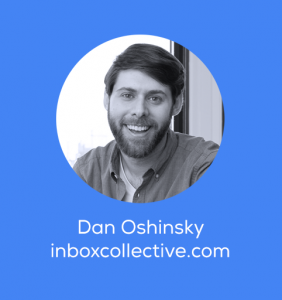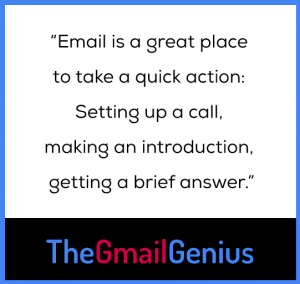How I Email: Dan Oshinsky, Email Consultant, Inbox Collective
Email is a non-negotiable part of everyday life. For some, it’s an unruly time suck, but enlightened email users have systems to ensure they’re not a slave to the inbox. We’re asking smart thinkers to give us a peek inside their inboxes, share tips, ideas, gripes, and everything in between.
Dan Oshinsky runs the email consultancy Inbox Collective. Previously, he worked as the Director of Newsletters at The New Yorker and BuzzFeed. He is the creator of Not a Newsletter, a monthly briefing with news, tips, and ideas about how to send better email.
 How do you manage your inbox?
How do you manage your inbox?
Mine’s not actually all that complicated. Years ago, I started using SaneBox to manage my inbox. I’ve got a few folders — a primary inbox, a folder for general newsletters, a folder for newsletters I read for Not a Newsletter, and a folder for travel-related emails. It’s pretty simple, but it works, and it means that when I log into my primary inbox, I’ve usually only got a half-dozen urgent emails to reply to. It helps me prioritize and then get back to work as quickly as possible.
Otherwise, I do my best to reply to every email within 24 hours. I try not to spend all day in my inbox — I typically reply in batches throughout the day.
You shared thoughts on how to write a great email when you were Director of Newsletters at Buzzfeed. How has your thinking evolved since then?
Most people don’t use email for what it’s really best for: Taking action. Email is a great place to take a quick action: Setting up a call, making an introduction, getting a brief answer. Whether I’m sending a work email or writing a newsletter, I’m always thinking about the action that I want the recipient to take next, and making sure that the reader knows what to do once my email lands in their inbox.
What is your best piece of advice for those who use email in a marketing capacity?
Question the experts. So often, I meet marketers who tell me that they made a decision — we only use purple buttons in newsletters, or we always send our emails on Tuesdays at 11:30 AM — because they read a case study somewhere that told them to do that, and accepted those results as a universal best practice.

But what works for one newsletter may not work for you and your audience. Test out those ideas and see what your audience actually responds to. Set your own best practices.
Which email newsletters stand out to you? Which brands are doing especially well? What do you like about what they do?
I think so many of us in this space owe a big thank you to two newsletters that really pushed things forward in the past decade: Politico’s Playbook and TheSkimm. So many of the destination newsletters — those newsletters that bring the best stories right to your inbox — that we see today are a result of the formats that those two helped establish. Both are great examples of how you can build around a specific audience, and then identify how to uniquely serve those readers.
If you could change one thing about email, what would it be?
On the marketing side of things: I wish Gmail was more transparent with those of us who produce newsletters on a daily basis. Better understanding what Gmail defines as a great email would help so many in this industry create better email strategies that put their readers and users first.
Final thoughts?
No matter what you read elsewhere, email’s not dead. It’s a powerful, decentralized, mobile-friendly network that connects the world and puts its users first — I don’t think it’s going anywhere for a long, long time.